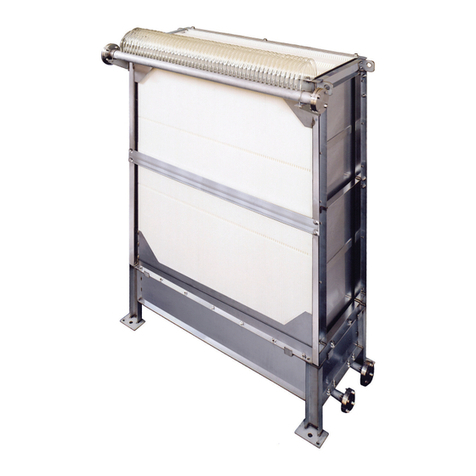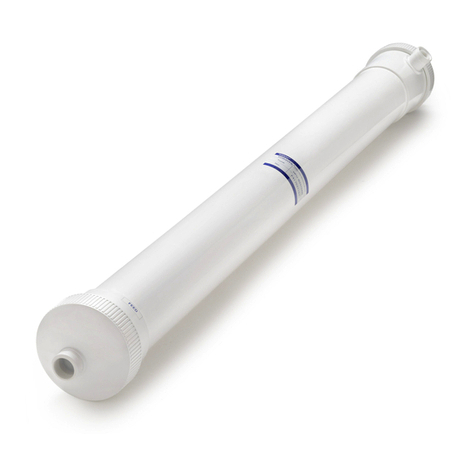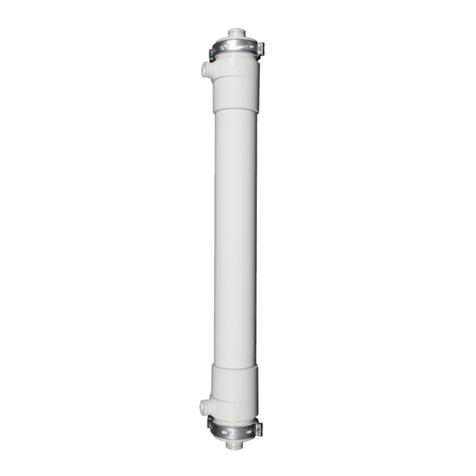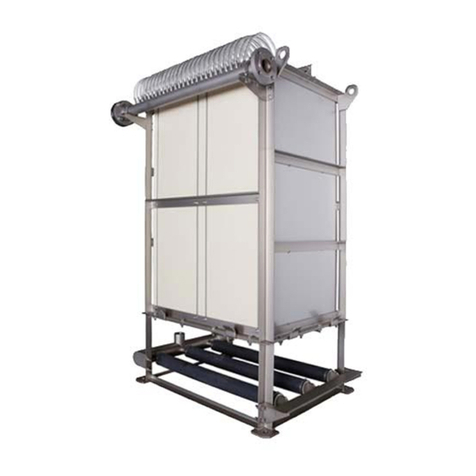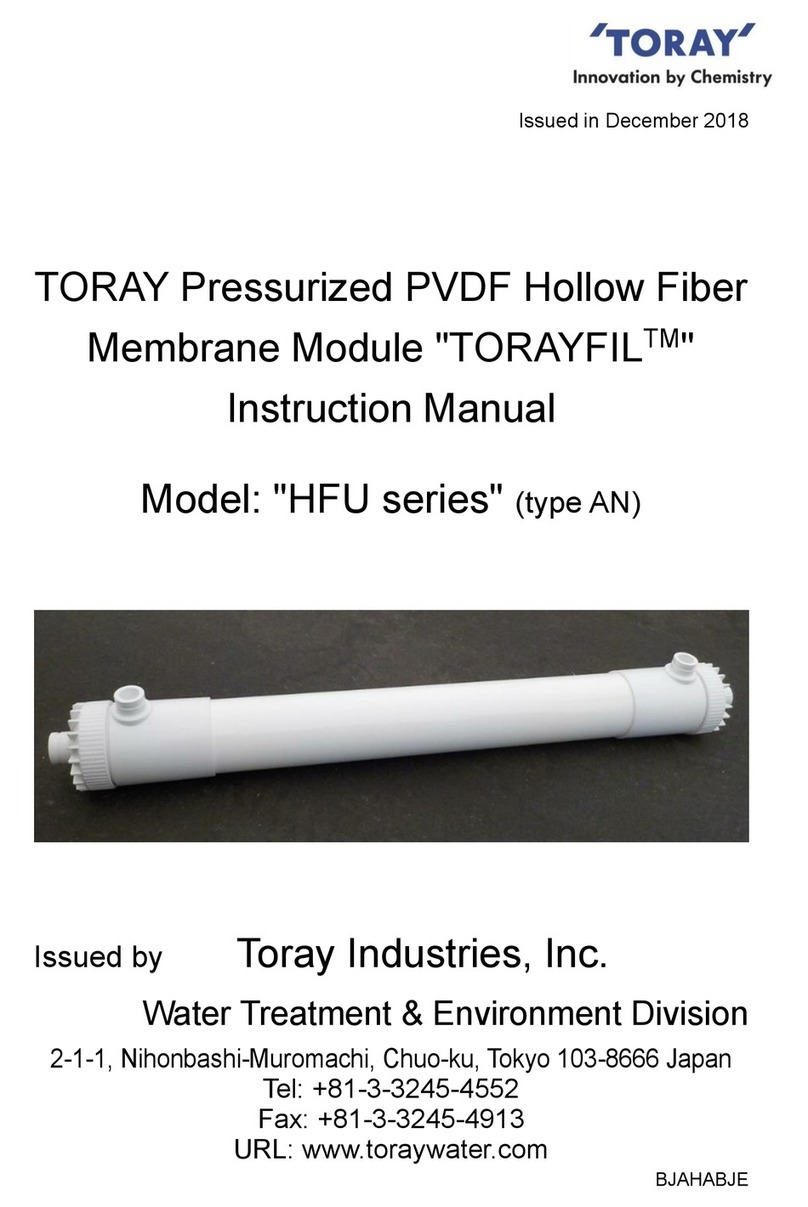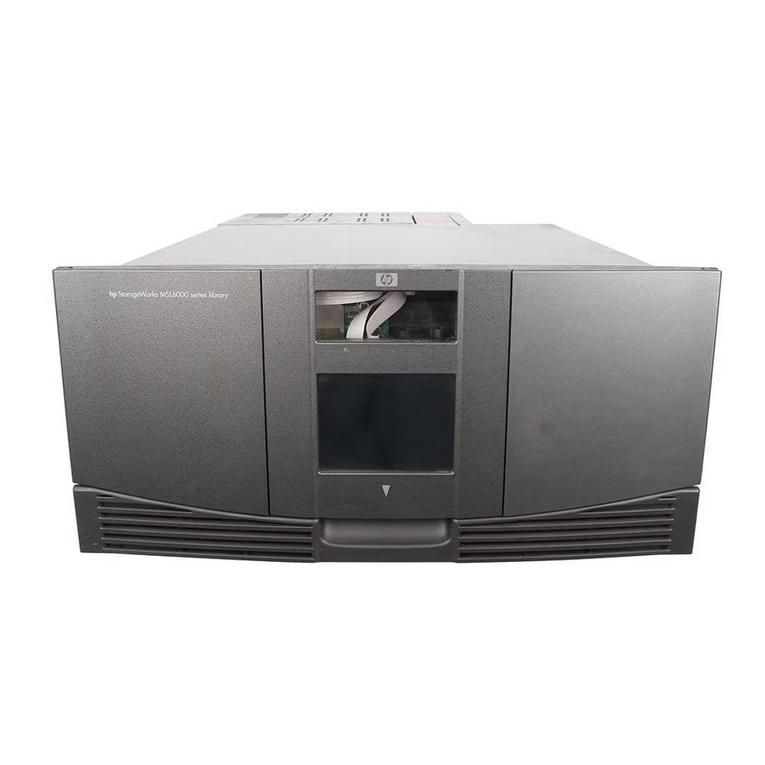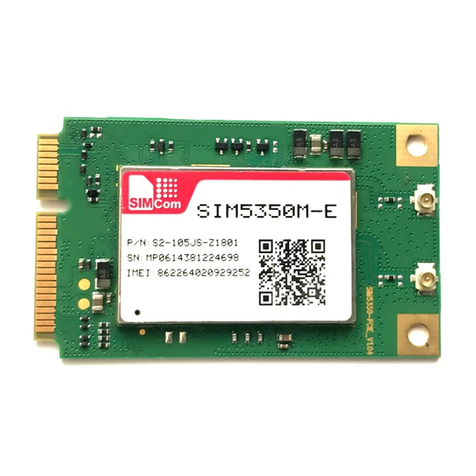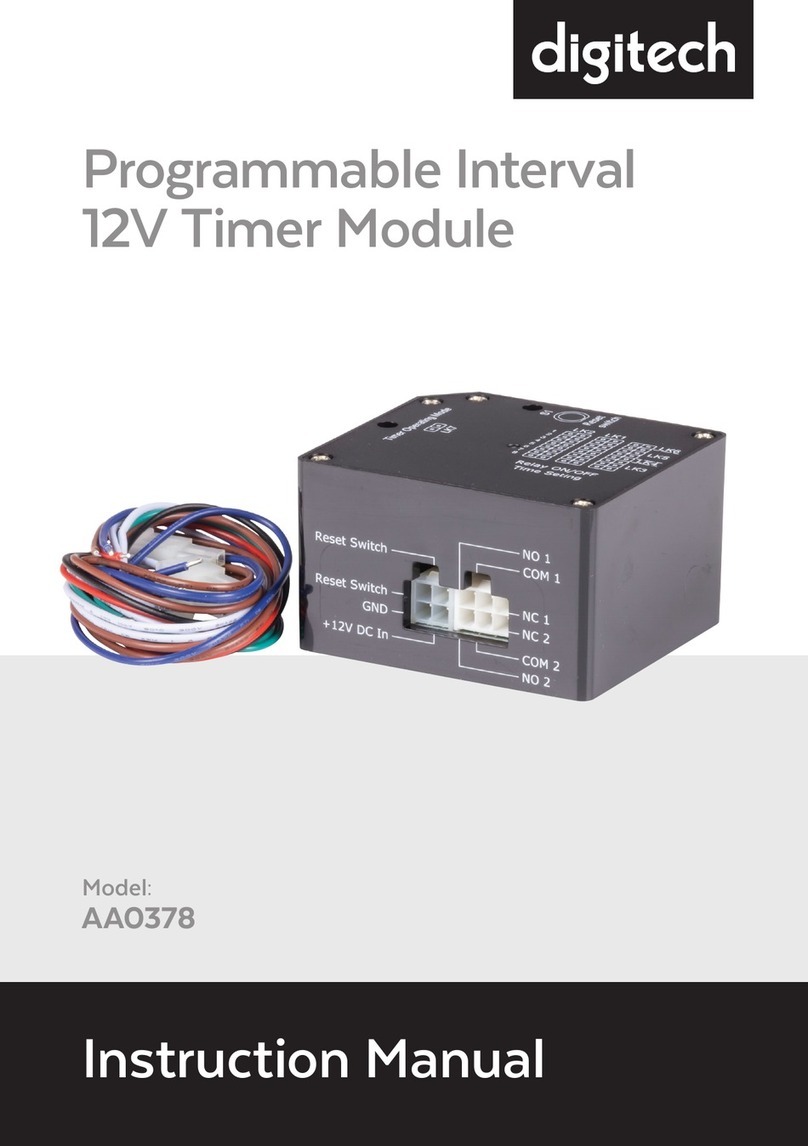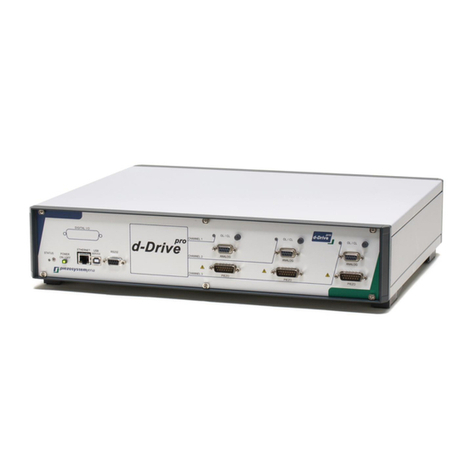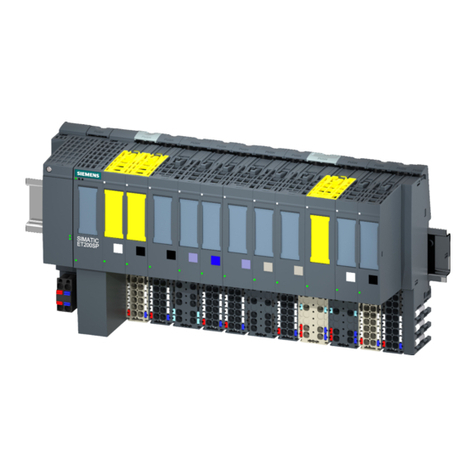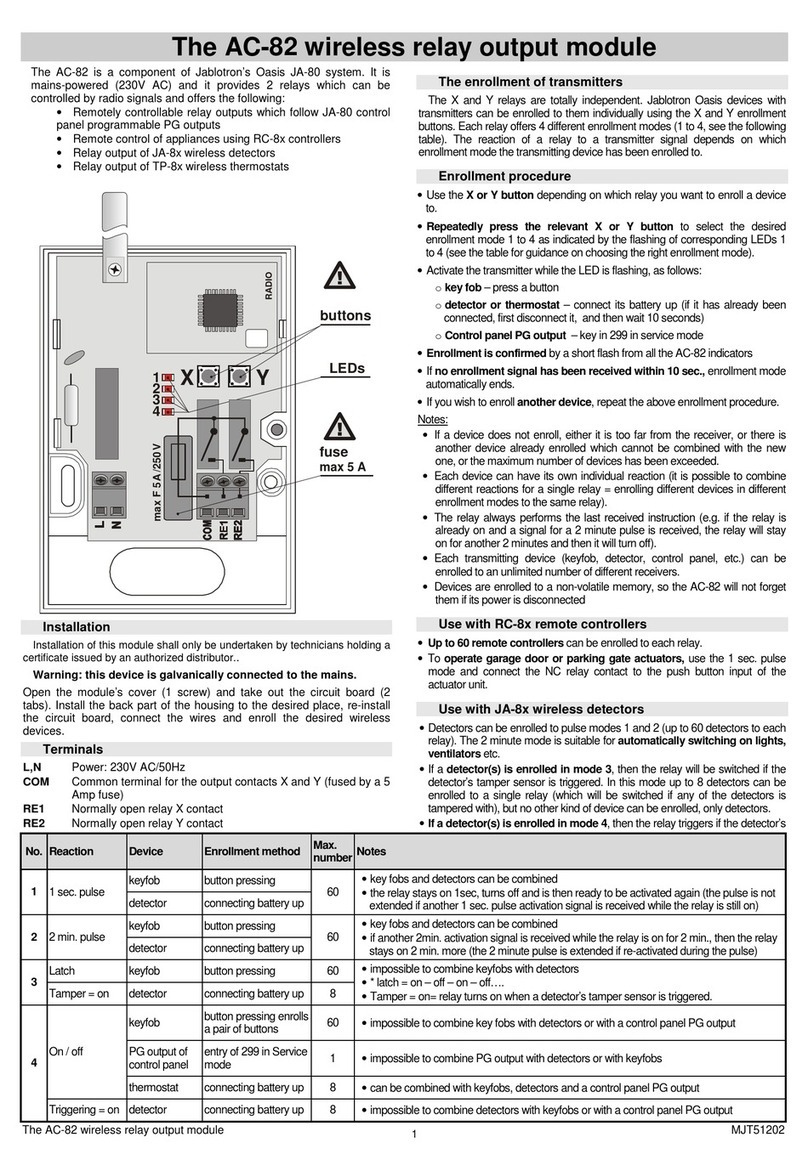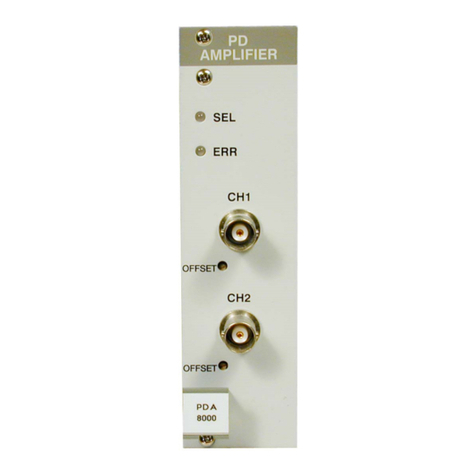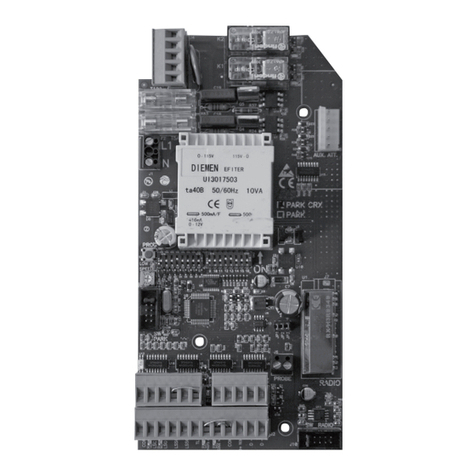Toray TORAYFIL HFU-B2315AN User manual

Issued in June 2020
TORAY Pressurized PVDF Hollow Fiber
Membrane Module "TORAYFILTM"
Instruction Manual
Model: "HFU-B2315AN" (type AN)
issued by Toray Industries, Inc.
Water Treatment & Environment Division
2-1-1, Nihonbashi-Muromachi, Chuo-ku, Tokyo 103-8666 Japan
Tel: +81-3-3245-4557
Fax: +81-3-3245-4913
URL: www.toraywater.com
BJBJJFJG

Content
I. Introduction .................................................................................................. 1
1. Characteristics of Toray "HFU series" Membrane Modules.......................1
2. Applications of Toray "HFU series" Membrane Module.............................2
II. For Your Safety ............................................................................................3
1. Safety Instruction for Unpacking and Installation ......................................4
2. Safety Instruction for Filtration Operation..................................................6
3. Safety Instruction for Chemical Cleaning ..................................................8
4. Safety Instruction for Disposal ..................................................................9
III.
Specifications of Toray "HFU-B2315AN" Membrane Module
........................... 10
IV.
Configuration of Toray "HFU-B2315AN" Membrane Module
............................ 13
V. Installation.................................................................................................. 14
VI. Operation ................................................................................................ 18
1. Filtration .................................................................................................. 18
2. Backwash and Air-scrubbing...................................................................20
3. Toray Maintenance Cleaning................................................................... 23
4. Basic Trans-Membrane Pressure Calculation......................................... 26
5. Temperature Correction Factor ............................................................... 27
VII. Chemical Cleaning.................................................................................. 28
VIII. Storage of Membrane Module ............................................................. 33
1. Storage of New Membrane Modules....................................................... 33
2. Storage of Membrane Modules after use................................................ 33
3. Replace Preservative Chemical .............................................................. 34

1
I. Introduction
Toray PVDF Hollow Fiber Membrane Module "HFU series" is a pressurized
hollow fiber UF (Ultra Filtration) membrane module developed with polymer
science and membrane fabrication technologies accumulated over decades of
successful membrane manufacturing at Toray Industries, Inc.
The membrane material is Polyvinylidene fluoride (PVDF). The nominal pore
size of the membrane is 0.01 micron.
The module, which is permanently potted in its casing, is pressure-driven which
provides equal filtrate quality to submerged modules, while offering greater TMP
range for more flexible plant operation. Maximum operating pressure is 300 kPa
(43.5 PSI). Flow direction is outside-in, which is more suitable for higher
turbidity water treatment because of the air-scrubbing effectiveness.
Additionally, outside-in modules are able to remove suspended solids more
effectively at higher recovery rates compared to inside-out fibers.
1. Characteristics of Toray "HFU series" Membrane Modules
(1) High Filtration Flux
HFU series provides high filtration flux and stable operation for the filtration
of various raw water sources. The membrane is made with a special
spinning method, which enables high permeability and high fouling resistance.
(2) Excellent Water Quality
HFU series provides very good water quality for the filtrate, extremely low
turbidity since the membrane has 0.01 micron nominal pore size. HFU
series is recommended to be applied to the tertiary treatment of sewage
water and RO pretreatment in seawater desalination.
(3) High Mechanical Strength
The membrane of HFU series has very high mechanical strength because it
is made of PVDF with the special spinning method developed by Toray.
HFU series provides high integrity and durability under recommended

2
operating conditions.
(4) High Chemical Durability
The membrane material of HFU series is PVDF, which allows you to clean
the membrane with high concentrations of chlorine and with high
concentrations of acid resulting in better cleaning and longer sustainable
membrane flux rates.
2. Applications of Toray "HFU series" Membrane Module
Drinking Water Production
Tertiary Treatment of Sewage Water
RO Pretreatment in Seawater Desalination
Industrial Water Production
Reuse of Industrial Waste Water

3
II. For Your Safety
Please be sure to read and follow the instructions below before using HFU
series. This manual should be retained for future reference.
Follow the safety precautions as they are intended to protect operators and
equipment from various risks such as physical harm and/or property
damage. The following table shows a level of potential risk for each
indicated symbol.
This symbol indicates an imminent hazardous situation
which will result in serious injury or death when the
instruction is not observed.
This symbol indicates a potentially hazardous situation
which will result in serious injury or death when the
instruction is not observed.
This symbol indicates a potentially hazardous situation
which might result in injury or property damage when
the instruction is not observed.
The following table explains the information to be noted.
“Prohibited”
This symbol indicates a prohibited action or procedure.
“Instruction”
This symbol indicates an important action or
procedure which has to be taken without fail.
Prohibited
!
!
Instruction

4
1. Safety Instruction for Unpacking and Installation
Be sure to wear safety gear such as rubber gloves and safety glasses
for unpacking. The membrane is packaged in sodium hypochlorite
solution (Max. 200 mg/L of chlorine). If the solution happens to splash
onto the skin, wash the affected part with running water. If the solution
happens to get in the eyes or mouth, wash the affected part with
sufficient amounts of clean running water for more than 15 minutes and
see the doctor immediately.
Be sure to wear safety gear such as a helmet and safety shoes to avoid
injury due to falling of the modules.
The preservative solution should be drained out before using the
modules. After that, keep clean water in the modules to prevent the
hollow fiber membrane from drying out. Do not allow the modules to
dry even for a few hours.
The membrane modules should not be frozen.
Be careful not to damage or dent the modules during handling.
Be sure to wear protective gloves to avoid injury of hands by packing
box of the modules.
!
!
Instruction
!
!
Instruction
Prohibited
Prohibited
Prohibited
!
!
Instruction

5
Housing type joints and screw are applied for connecting the modules
of HFU-B2315AN to the piping. Follow the instruction of the
connection submitted by the supplier at the connection point. Wrong
connections may damage the modules.
When connecting and unconnecting the modules to the piping, be sure
to secure a sufficient working space, and take care not to catch and
hurt fingers.
Keep the connection surface free of any dirt or oils.
Be sure to install the modules vertically for effective air scrubbing.
!
!
Instruction
!
!
Instruction
Prohibited
!
!
Instruction

6
2. Safety Instruction for Filtration Operation
Flush all the piping out with clean water and make sure no debris is
remaining in the piping prior to connecting the modules.
Confirm that the preservative chemical in the modules is completely
drained out before starting the filtration operation. The preservative
chemical is harmful to humans.
Flush the modules at low pressure, filling from the bottom, and vent to
remove any air from the modules. Air left in the modules may cause
water hammer and may result in damage to the membrane.
Prior to use, make certain modules are flushed. Filtrate water should
be drained unless it meets the required quality.
Protect modules from direct sunlight and ultraviolet light. Ultraviolet
light can degrade module housing and membranes.
Constantly monitor filtrate water quality such as turbidity and/or the
number of particles during filtration, and stop the operation if abnormal
water quality is detected.
!
!
Instruction
!
!
Instruction
!
!
Instruction
!
!
Instruction
!
!
Instruction
!
!
Instruction

7
Do not exceed the maximum applicable pressure of 300 kPa (43.5 PSI).
Higher pressures can damage the modules. Do not exceed the
maximum temperature of 40 degree C (104 degree F). The higher
temperature damages the modules.
Do not freeze the membrane modules.
The operating conditions, including the filtration flux and the periodical
physical cleaning, must be properly set-up otherwise the trans-
membrane pressure may rise too quickly. The operation range is
described in the latter section of this manual.
Make sure air tubes or pipings are properly fixed. Otherwise, the
tubes or pipings may blow away or behave violently during air
scrubbing.
Do not overfeed air to the modules. Excessive scrubbing air damages
the membranes and/or shortens the membrane life.
The air flow rate should be within the range below for each module type.
HFU-B2315AN: 3.6 – 6.7 Nm3/h (2.1 – 3.9 scfm)
The maximum required air pressure during the air-scrubbing for inside
of the module will be 40 kPa (6 PSI).
At the integrity tests, such as Pressure Decay Test (PDT) or Diffusive
Air Flow (DAF) Test, keep the air pressure below 130 kPa (18.9 PSI).
Keep the source air pressure lower than 200 kPa (29 PSI), to prevent
excess air inflow. All the air used for air scrubbing and integrity testing
must be dry oil-free air.
Prohibited
!
!
Instruction
!
!
Instruction
!
!
Instruction
!
!
Instruction
Prohibited

8
3. Safety Instruction for Chemical Cleaning
Take special precautions when handling chemicals during chemical
cleaning. Wear the safety gear such as safety glasses and protective
gloves. If chemicals come in direct contact with your skin or your
clothes, treat the contacted part appropriately based on the SDS.
Do not mix sodium hypochlorite with acid. Such mixture generates
toxic chlorine gas.
Stop operation whenever any anomaly occurs with the equipment or
any signs of an anomaly are observed.
In the chemical cleaning, strictly follow the procedure described in the
latter section of this manual. Otherwise you may damage the modules
or negatively affect the membrane performance.
!
!
Instruction
Prohibited
!
!
Instruction
!
!
Instruction

9
4. Safety Instruction for Disposal
When dispose the modules, please apply a service of a qualified waste
disposing company. When the module is to be incinerated, please
apply the appropriate facilities in which hydrogen fluoride (HF) gas can
be neutralized. HF gas is generated with the incineration of
membrane.
!
!
Instruction

10
III. Specifications of Toray "HFU-B2315AN" Membrane Module
Table 1. Specifications of membrane *1)
Membrane Material
PVDF (Polyvinylidene fluoride)
Nominal Pore Size *2)
0.01 micron
Trans-Membrane
Pressure
Maximum *3)
300 kPa (43.5 PSI)
Normal Operation
Lower than 200 kPa (29.0 PSI)
Storage and Operating
Temperature Range
0 – 40 degree C
(32 – 104 degree F)
Operating pH Range
1 – 10
*1): Please note that the specifications are subject to changes from time to time.
*2): Estimation from removal of model particles.
*3): TMP (Trans-Membrane Pressure) should be below 300 kPa (43.5 PSI) at any time
even during the filtration.
Table 2. Feed water limits *1), *4)
Turbidity
Intermittent Peak *5)
200 NTU
Continuous Maximum
50 NTU
TSS
Intermittent Peak *5)
200 mg/L
Continuous Maximum
50 mg/L
Ozone
Not detected
Pretreatment Filter Mesh Size
Smaller than 200 micron meter
Temperature Range
0 – 40 degree C
(32 – 104 degree F)
pH Range
1 – 10
Maximum Feed Pressure
300 kPa (43.5 PSI)
*1): Please note that the specifications are subject to changes from time to time.
*4): In case of design, please contact us.
*5): The duration time should be less than 48 hours and the occurrence frequency should
not exceed more than once a month.

11
Table 3. Cleaning limits *1)
Cleaning pH Range
0 – 12
Cleaning Temperature Range
0 – 40 degree C
(32 – 104 degree F)
Maximum Concentration of NaClO as Cl2
5,000 mg/L (10 < pH < 12)
Maximum NaClO Exposure
(lifetime contact time) as Cl2
1,000,000 mg/L hours
Maximum Acid Contact Time
1,000 hours (pH > 0)
*1): Please note that the specifications are subject to changes from time to time.
Table 4. Specifications of modules *1)
Module Type
HFU-B2315AN
Membrane Surface Area
(Outer Surface)
60 m2
(646 ft2)
Dimensions
Diameter
178 mm
(7.01 inches)
Length
2,332 mm
(7.651 ft.)
Weight
Full of Water
65 kg (143 lbs)
Drained
35 kg (77 lbs)
Materials
Housing
PVC and/or equivalent
Potting
Epoxy and/or equivalent
Connections
Top
Housing type joint
2 inches (U.S.)
Bottom
Housing type joint
2 inches (U.S.)
Side
Screw
2.28 inches (original)
Operating
Conditions
Max. Feed Water
Flow
(Feed Water only)
10.0 m3/h (44 gpm)
Max. Backwash
Flow
(Backwash only)
11.2 m3/h (49 gpm)
Max. Air Flow
(Air only)
6.7 Nm3/h (3.9 scfm)
Filtration Method
Outside to inside, dead end
Max. Inlet
Pressure
300 kPa (43.5 psi)
Maximum
Temperature
40 degree C (104 degree F)
*1): Please note that the specifications are subject to changes from time to time.

12
Handle and operate the modules within the ranges
and the limits indicated in Table 1 to 4. Operation
out of these ranges or limits may damage the
modules, and affect filtration performance.

13
IV. Configuration of Toray "HFU-B2315AN" Membrane Module
(1): Filtrate Outlet / Inlet of Backwash
Water
(2): Air Outlet / Backwash Water Outlet
(3): Feed Water Inlet / Air Inlet / Drain
Outlet
Connections
Pipe fitting outer
diameter
mm (in)
Connectors
(1)
60.3 (2”)
Housing type
joint 2 inches
(U.S.)
(2)
57.91 (2.28”)
Original *)
+ AS568-325
(Gasket)
(3)
60.3 (2”)
Housing type
joint 2 inches
(U.S.)
*) Referential Drawings:
Fig. 1 Type: HFU-B2315AN
Note: In case of the above
module does not fit your skid,
please contact Toray.

14
V. Installation
The standard method to install the membrane modules is described below.
1. Unpack the membrane module from wooden box or corrugated box.
Be sure to wear protective gloves to avoid injury
of hands by packing box of the modules.
2. Remove plugging plate from each nozzle of the module.
3. Drain out the preservative solution from the module.
Wear rubber gloves and safety glasses when you
drain the preservative chemical. Note that the
preserving chemical is sodium hypochlorite
solution (Max. 200 mg/L of chlorine). If this
solution splashes onto your skin, wash the
affected part with running water. If the solution
gets in your eyes or mouth, wash the affected part
with enough amounts of running water for over 15
minutes and see the doctor immediately.
4. Put the module vertically on a piping or a pedestal in the module rack. Fix
the module upright with connections and/or a supporting belt (see Fig. 2).
Do not drop the module.
Use equipment such as chain blocks, a crane or a
forklift truck when you handle the module. The
HFU-B2315AN module is too heavy to handle by
hand.

15
Take care not to catch and hurt fingers.
Be careful not to install the module upside down.
Confirm the module is installed in the right
direction.
Do not overtighten the module with connections
and/or the supporting belt, or you may damage the
module.
Do not allow the hollow fiber membranes to dry
even for a few hours, especially in summer.
Do not freeze the module.
Fig. 2 Installation of the membrane module

16
5. Connect the piping to each connection point of the module with Housing type
joints and screw (HFU-B2315AN) (see Fig. 3). For the screw, use plastic
connection and tighten by hand power. When you tighten or loosen the
Housing type joints, make certain to maintain sufficient space prior to the work
and be careful not to be wounded by swinging out or clipping your fingers.
Keep the connection surface free of any dirt or
oils.
Follow the instruction of the connection submitted
by the supplier. A wrong use may cause the
damage to the module.
6. Air inject should be located just beneath the bottom nozzle of the module to
inlet air completely to the module. Please refer to the below figure. Also, a
check valve is necessary to the air piping to avoid water reverse flow.
Make sure air tubes or pipings are properly
fixed. Otherwise, the tubes or pipings may
blow away or behave violently during air
scrubbing.

17
7. Make sure that the module is installed vertically.
If the module is not installed vertically, the effect
of the air scrubbing would be reduced and an
effective filtration will be impaired.

18
VI. Operation
1. Filtration
(1) Check that all piping is connected appropriately and flushed out prior to the
operation. Fig. 3 shows a typical example of piping.
(2) Make sure the feed water valve (V-1), the drainage valve (V-3) and the valve
for the scrubbing air (V-2) are “closed”.
(3) Make sure the filtrate water line is open. Open the air exhaust valve (V-4).
(4) Gradually open the feed water valve (V-1) and charge the feed water to the
module to purge any air out.
Fig. 3 Typical example of piping
Table of contents
Other Toray Control Unit manuals
Popular Control Unit manuals by other brands
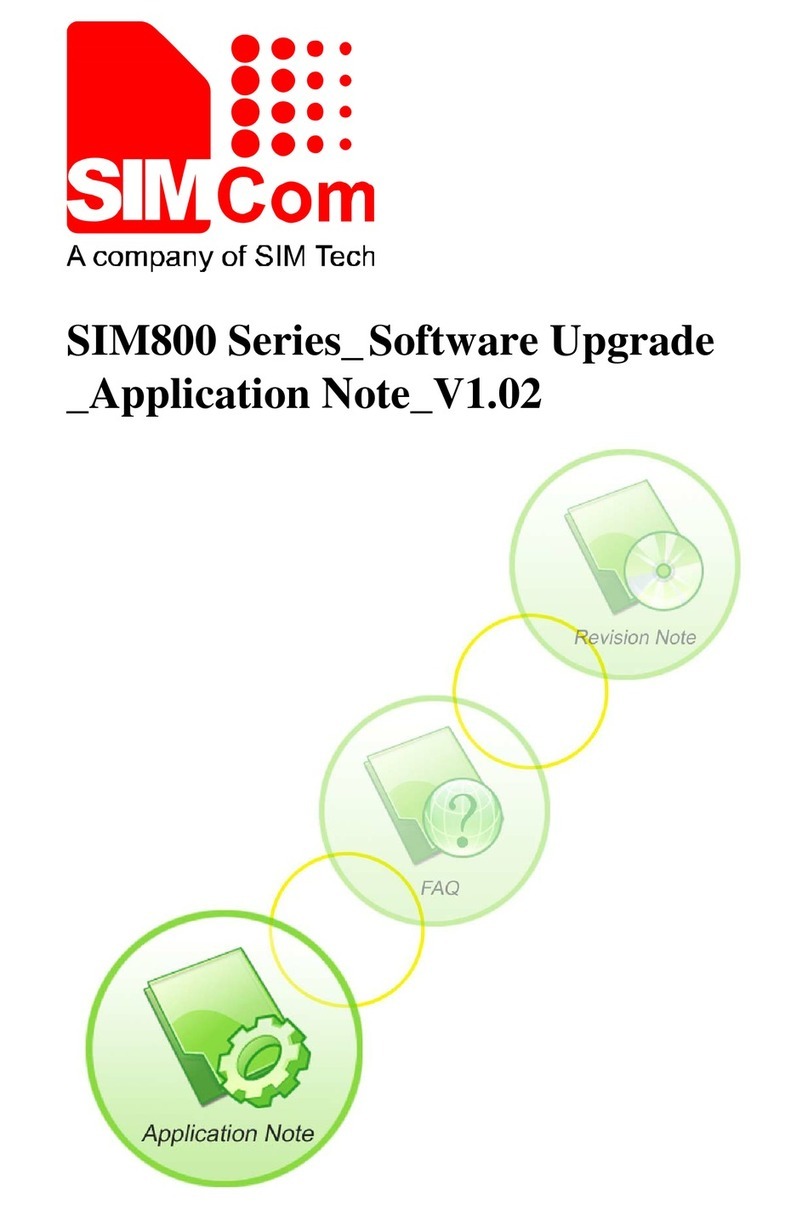
SimTech
SimTech SimCom SIM800 Series Application note
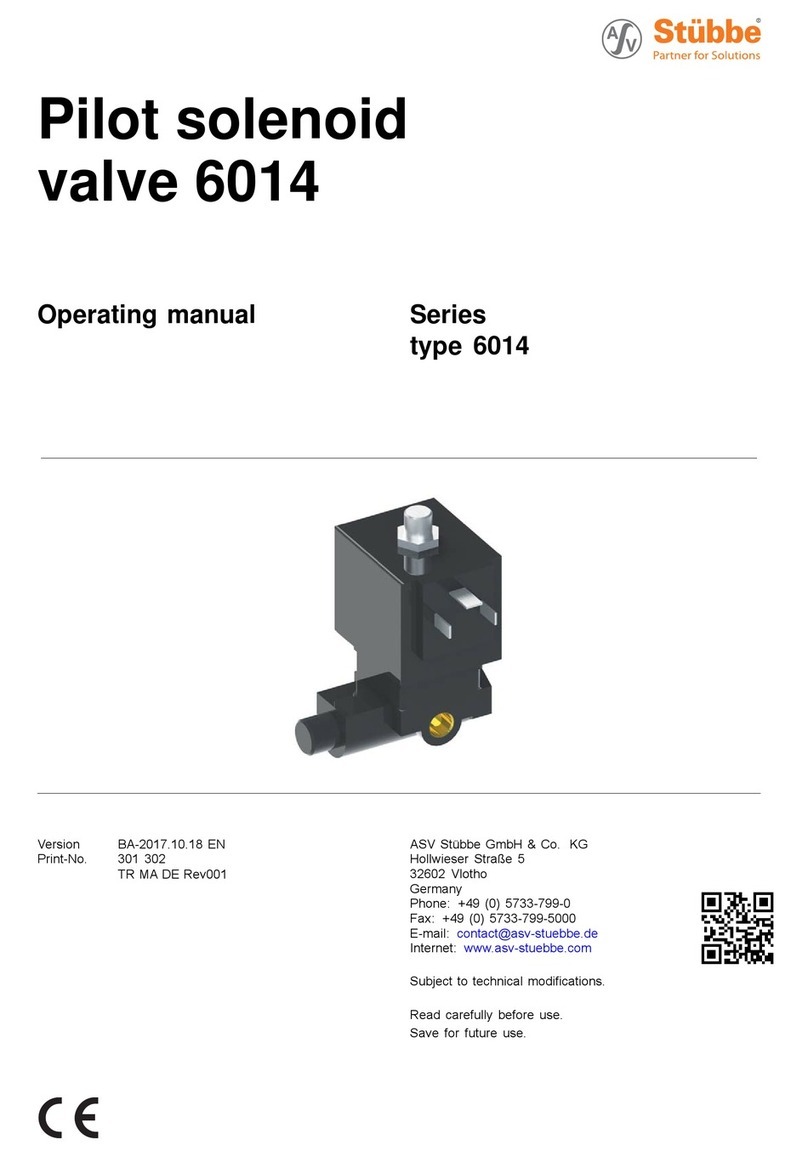
Stübbe
Stübbe 6014 Series operating manual
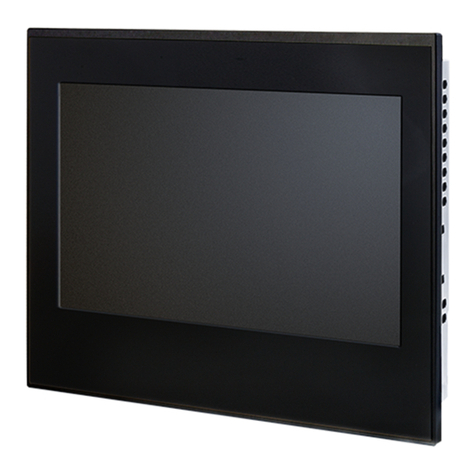
SIGMA TEK
SIGMA TEK HZS 7321 Technical manual

Hi-Link
Hi-Link HLK-7628N user manual
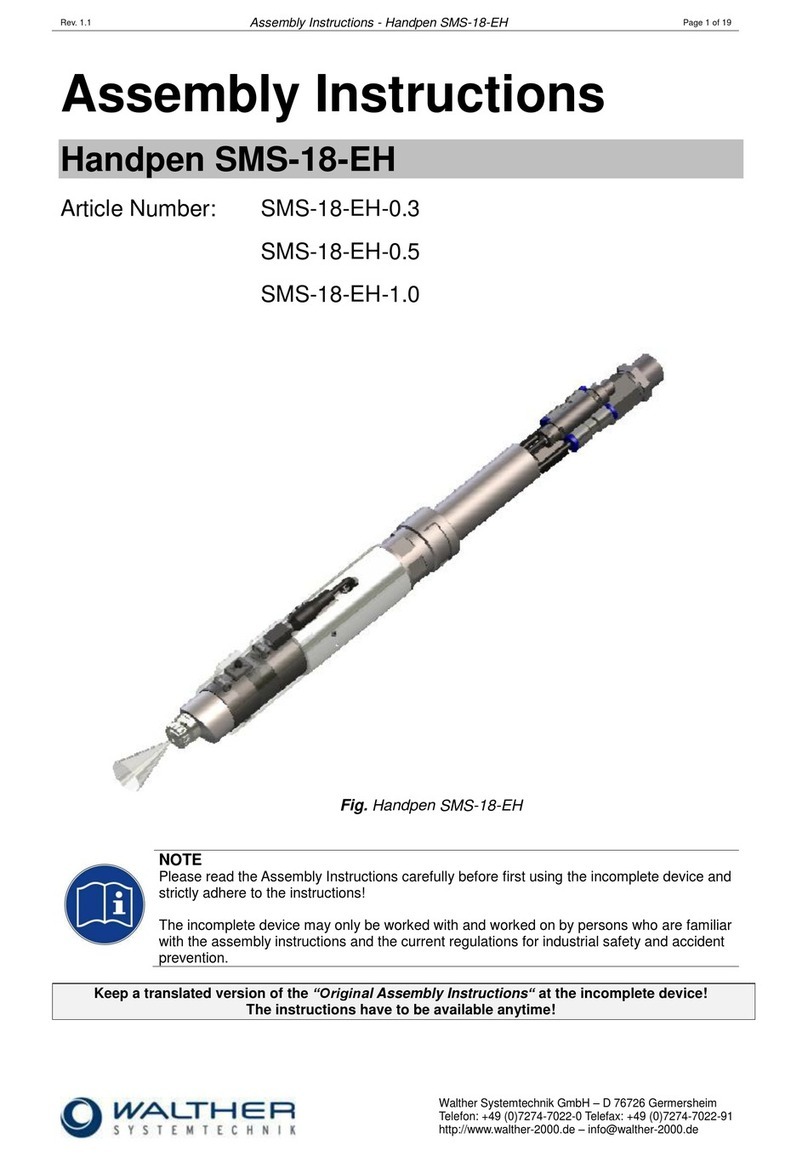
Walther Systemtechnik
Walther Systemtechnik SMS-18-EH Assembly instructions
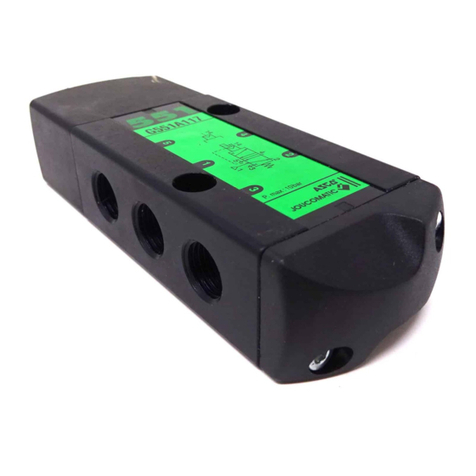
Asco
Asco 551 Series Installation and maintenance instructions

